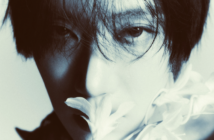Masks often have a negative image in many cultures, being something that one hides one’s true face or feeling behind. However in Korea, traditional masks are seen as liberating – once one is on your face, you are no longer bound by the social norms and are free to express yourself.
Andong Maskdance Festival is one of the best places to see this principle in action, as talented mask makers and performers gather to celebrate the art of the mask. It’s held from 30th September to 9th October.
For Ancient Koreans, masks were a symbol of the gods, but from the fifteenth century they became part of the entertainment world. Made from wood, these masks are usually brightly coloured, with exaggerated eyes, nose and mouth, sometimes bordering on the grotesque. Colours often represent the character’s sex, class and personality, for example a yellow mask is usually an idiot, and an elderly character is usually a dark colour. If you want to take a mask home with you, a simple wooden one costs about 60,000 KRW, or £40.
You can see some of the mask dance here in Arirang’s report from a few months ago
The Korean Foundation also made a video about the history of a specific type of mask dance found in Andong, the Hahoe Mask Dance, which is listed as an Important Intangible Cultural Property.
More information on this year’s event
Transport details from the Korean Tourist Board
Official website


![[Culture] Andong Maskdance Festival](https://unitedkpop.com/wp-content/uploads/2016/09/culture_mask.png)


